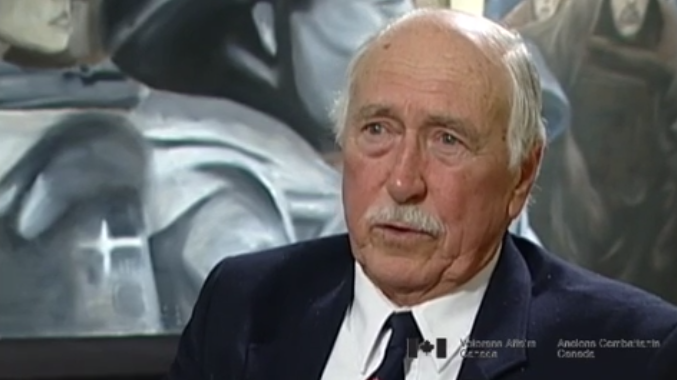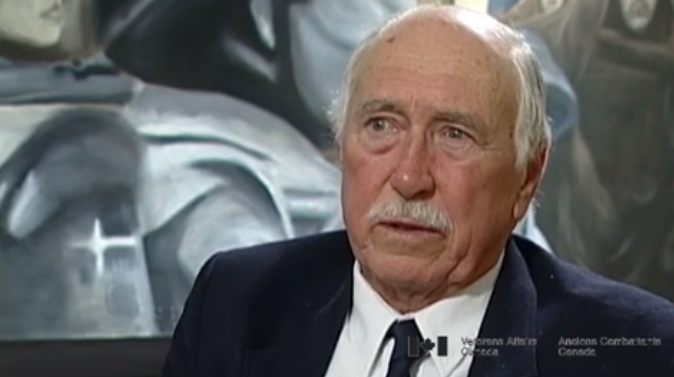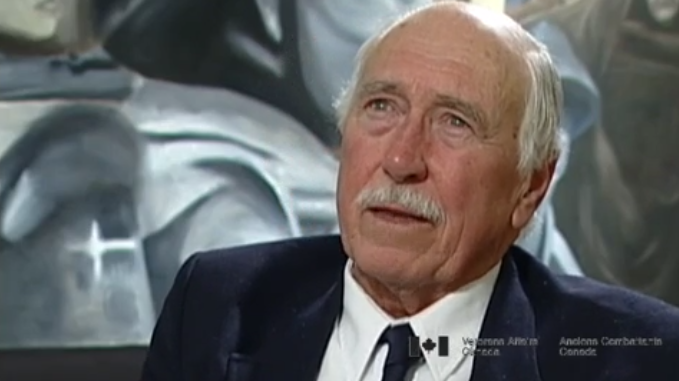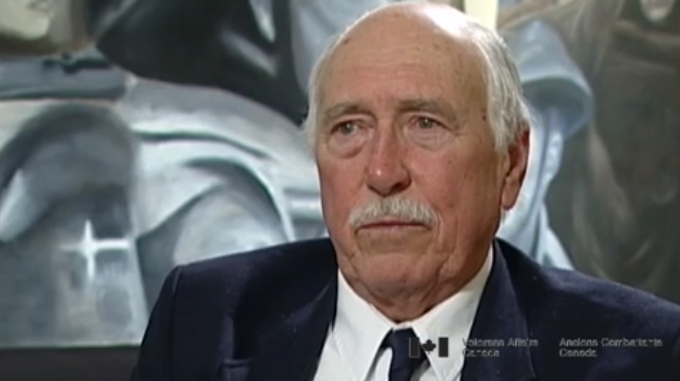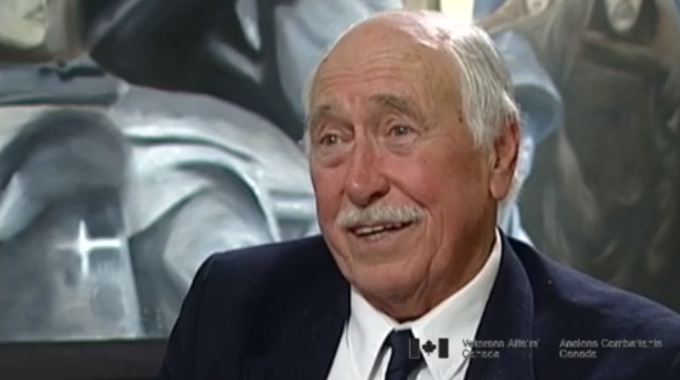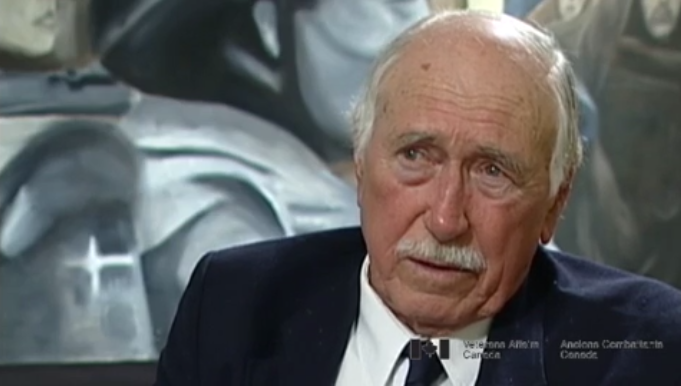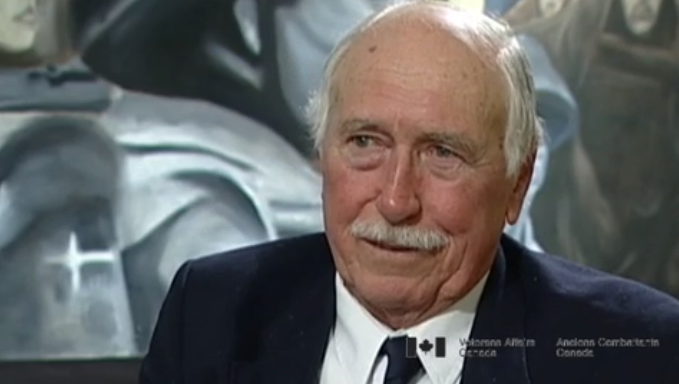Every mission could be a, a story. But the one that, really, is
the, the only time that I came to bailing out of that one. And
if you know the rear, the tail-turret and the mid-upper are part
near-dead people, to start with, because you very seldom
ever got out of there, very seldom, unless the air plane was
still stable. Because in, in the tail-turret, you're locked in.
You got, you got the doors, and, and they lock it at the back...
and you slide in, you slide in feet first on two railings, and
you slip in there. I used to undo the flying boots, just in
case. Close the doors, and you're in there. And your parachute
is hanging in the inside of the fuselage. Same with mid-upper,
his is hanging down on the side of the fuselage, too, held in by
two bungie cords. So, the minute you've been hit or something or
other, what happens? Hydraulic system's gone. So in the
tail-turret, how are you going to get out? You had, there was,
there was a little handle, a little gear down here and you just
engaged it and wound it back, trying to get the turret straight.
Reached behind you trying to get the doors unlocked. And lean
back and pick up the parachute off the rack. Snapped on the two
snaps on your chest. Crank the tail-turret around to the side
and bail out blackwards, backwards . Pretty near impossible. And
the same with mid-upper. You sat on a little seat of about yay
wide, and you got all your flying clothes on, you got an inner
suit, you've got underwear on, you've got an inner flying suit
on, and I have, you have a turtle-neck sweater on, and you have
slippers on that are hooked up for the hydro, and into the air
plane when you plug it in, you had juice going into the... Same
with the gloves, they had heated gloves. And the suit was kind
of heated up. And then the big heavy old canvas type of a suit,
on the outer, outer suit. And, you know... and you only got such
a small space to get in and out of. And then to go in the
mid-upper turret, you had to go up a ladder. You'd have to climb
down, get your parachute on, go and find the door that you can
jump out. I don't know... people just... not too bad at the
front. They're fine at the front, the escape hatch is right
there, they can just kick the door out, and you could bail out
through the door. And that's what they do, the bomb-aimer and
the, and the navigator and all went through the front. But those
two little fellas at the back there, they haven't got much
chance, I'm afraid. But the only time, as you were asking about
the trip, which we were down doing a job on some submarine pens
down in St. Nazaire and, and coming back we got a fire in the
nose of that thing. And we were over the English Channel, and of
course the front was gone pretty well off the, of the nose , and
was the only time that I got close enough... And you, you have a
one-man dingy, hitching a snap, a snap on the harness and then
you had the door open, and that was the closest I've ever come
to just waiting for them to say "abandon ship." But I wouldn't
have lasted once I hit the water. That Channel's cold and you
don't know where you are, nobody knows where you are. You get a
"may-day" out, it's ok. Might be lucky if you get the
PT boats to come along and pick you up.



